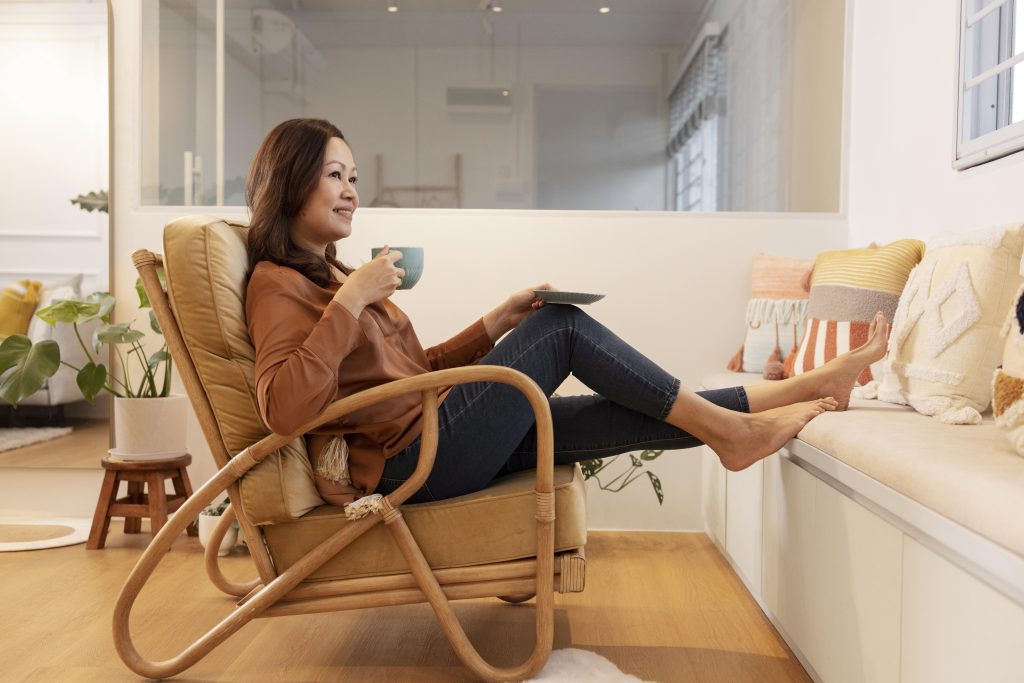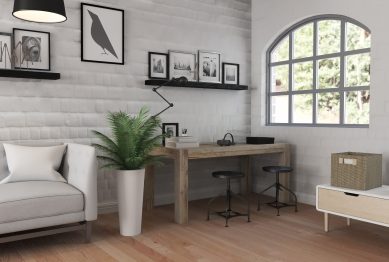Home has always been a place of rest and personal expression, but in 2025, comfort has become a top priority for homeowners and renters alike. Rising time spent indoors due to hybrid work, growing attention to wellness, and the integration of smart home technology are reshaping what it means to live comfortably. From biophilic design and energy-efficient upgrades to AI-powered climate control, the focus is no longer just on aesthetics—it’s about creating spaces that improve quality of life.
In this article, we’ll explore practical and trending ways to make your home more comfortable, grounded in research and emerging design solutions. These strategies combine technology, sustainability, and wellness to ensure your living space feels supportive, functional, and inviting.

Why Comfort at Home Matters More Than Ever
According to the American Time Use Survey (2024), people now spend an average of 60% of their day at home. With remote work and flexible schedules becoming permanent fixtures, the home has evolved into a multi-purpose hub for work, rest, entertainment, and wellness. Comfort impacts not only mental health but also productivity and overall well-being.
A study published in Building and Environment (2024) found that factors like air quality, temperature, natural light, and acoustics directly affect occupant satisfaction and stress levels. As people recognize the influence of their environment, investing in home comfort has become both a personal and financial priority.
1. Embrace Smart Climate Control
Temperature and air quality are critical when it comes to comfort. Traditional thermostats are giving way to AI-driven climate control systems. Devices like Nest, Ecobee, and Tado now learn your habits, adjust temperature based on occupancy, and even respond to local weather forecasts.
Benefits of Smart Climate Systems:
- Automatically optimize heating and cooling to save energy.
- Maintain consistent comfort throughout the day.
- Improve indoor air quality by integrating with smart purifiers and humidifiers.
This trend not only enhances comfort but also reduces energy bills, making it a sustainable choice.
2. Introduce Biophilic Design
Biophilic design, or incorporating natural elements into interior spaces, has gained significant traction. A 2023 report by the International WELL Building Institute highlights that exposure to greenery indoors reduces stress and increases productivity.
Easy Biophilic Additions:
- Indoor plants such as snake plants, pothos, or peace lilies.
- Natural materials like wood, stone, or bamboo furniture.
- Large windows or skylights for natural light.
- Water features such as tabletop fountains for calming soundscapes.
Bringing nature inside makes a home feel warmer, healthier, and more inviting.
3. Prioritize Ergonomic Furniture
With remote and hybrid work continuing, comfortable furniture has become a must. Ergonomics ensures that furniture supports the body, reduces strain, and improves posture.
Furniture Trends in 2025:
- Adjustable desks that transition from sitting to standing.
- Chairs with lumbar support and breathable mesh.
- Modular sofas that can be rearranged for lounging or social gatherings.
- Multi-functional storage furniture to reduce clutter.
Comfort extends beyond relaxation—it supports your physical health throughout the day.
4. Improve Lighting for Mood and Function
Lighting plays a vital role in creating ambiance and supporting circadian rhythms. Smart lighting systems like Philips Hue and Nanoleaf let you adjust brightness and color temperature to match activities.
Lighting Tips:
- Use warm lighting in living rooms and bedrooms to promote relaxation.
- Install bright, cool lighting in workspaces for focus.
- Add dimmers to customize settings.
- Incorporate natural light with sheer curtains and reflective surfaces.
Proper lighting enhances mood, reduces eye strain, and creates a more comfortable atmosphere.
5. Focus on Acoustic Comfort
Noise pollution is often overlooked but significantly impacts comfort. According to the World Health Organization (2024), excessive indoor noise can increase stress, disrupt sleep, and lower concentration levels.
Acoustic Solutions:
- Rugs, curtains, and upholstered furniture to absorb sound.
- Acoustic panels for home offices or entertainment rooms.
- White noise machines or apps for restful sleep.
- Double-glazed windows to block outdoor noise.
Quiet environments foster calmness and productivity, making acoustic comfort essential.
6. Optimize Air Quality
Indoor air quality has become a health and comfort priority, particularly in urban settings. The EPA (2024) emphasizes that poor indoor air can lead to fatigue, respiratory issues, and discomfort.
Air Quality Improvements:
- Use HEPA air purifiers to capture pollutants.
- Invest in houseplants that naturally filter air.
- Keep humidity between 40–60% to prevent dryness or mold.
- Ventilate regularly with fresh air when possible.
Good air quality directly impacts how comfortable you feel at home.
7. Add Personalized Comfort Zones
Every member of a household has different needs, and creating personalized comfort zones ensures that everyone feels at ease.
Examples:
- A cozy reading nook with blankets and soft lighting.
- A meditation corner with calming décor.
- A tech-free dining area for mindful meals.
- Dedicated gaming or home theater setups for entertainment.
These small but intentional spaces increase enjoyment and functionality.
8. Integrate Smart Home Technology
Smart devices are now central to home comfort. Beyond climate and lighting, connected ecosystems allow you to control entertainment, security, and daily tasks seamlessly.
Popular Smart Devices in 2025:
- Voice assistants like Alexa or Google Home for hands-free control.
- Smart blinds that adjust with sunlight.
- AI-powered refrigerators that track groceries and suggest meals.
- Energy-efficient washers and dryers with app-based scheduling.
Automation enhances convenience and ensures the home environment adapts to your needs.
9. Incorporate Sustainable Comfort
Sustainability has become an integral part of comfort. Eco-friendly upgrades not only support the planet but also enhance indoor living.
Sustainable Comfort Ideas:
- Install energy-efficient windows and insulation.
- Choose organic fabrics for bedding and upholstery.
- Use low-VOC paints for healthier air.
- Solar-powered outdoor lighting for ambiance and savings.
Sustainability and comfort increasingly go hand in hand, shaping the homes of the future.
10. Focus on Wellness-Oriented Design
Wellness-focused design is the ultimate comfort trend in 2025. This approach blends physical, mental, and emotional well-being.
Wellness Features:
- Home gyms or yoga spaces with smart equipment.
- Hydrotherapy showers with adjustable jets.
- Circadian rhythm lighting to improve sleep quality.
- Aromatherapy diffusers to enhance relaxation.
Homes that support holistic wellness offer comfort that extends beyond the physical environment.
Conclusion
In 2025, creating a comfortable home is about more than plush sofas or cozy décor—it’s about integrating technology, wellness, and sustainability into everyday living. From smart climate control and ergonomic furniture to biophilic design and wellness-oriented spaces, the ways to make your home more comfortable are diverse and practical.
As people continue to spend more time indoors, comfort is no longer a luxury but a necessity. By embracing these trends and tailoring them to your lifestyle, you can transform your living space into a sanctuary that supports both well-being and productivity.
References
- Impact of Indoor Air Quality and Multi-domain Factors on Human Productivity and Physiological Responses: https://www.researchgate.net
- An Investigation of Indoor Environment Quality on Occupants’ Thermal Responses, https://www.mdpi.com
- Biophilic learning space at, https://en.wikipedia.org









